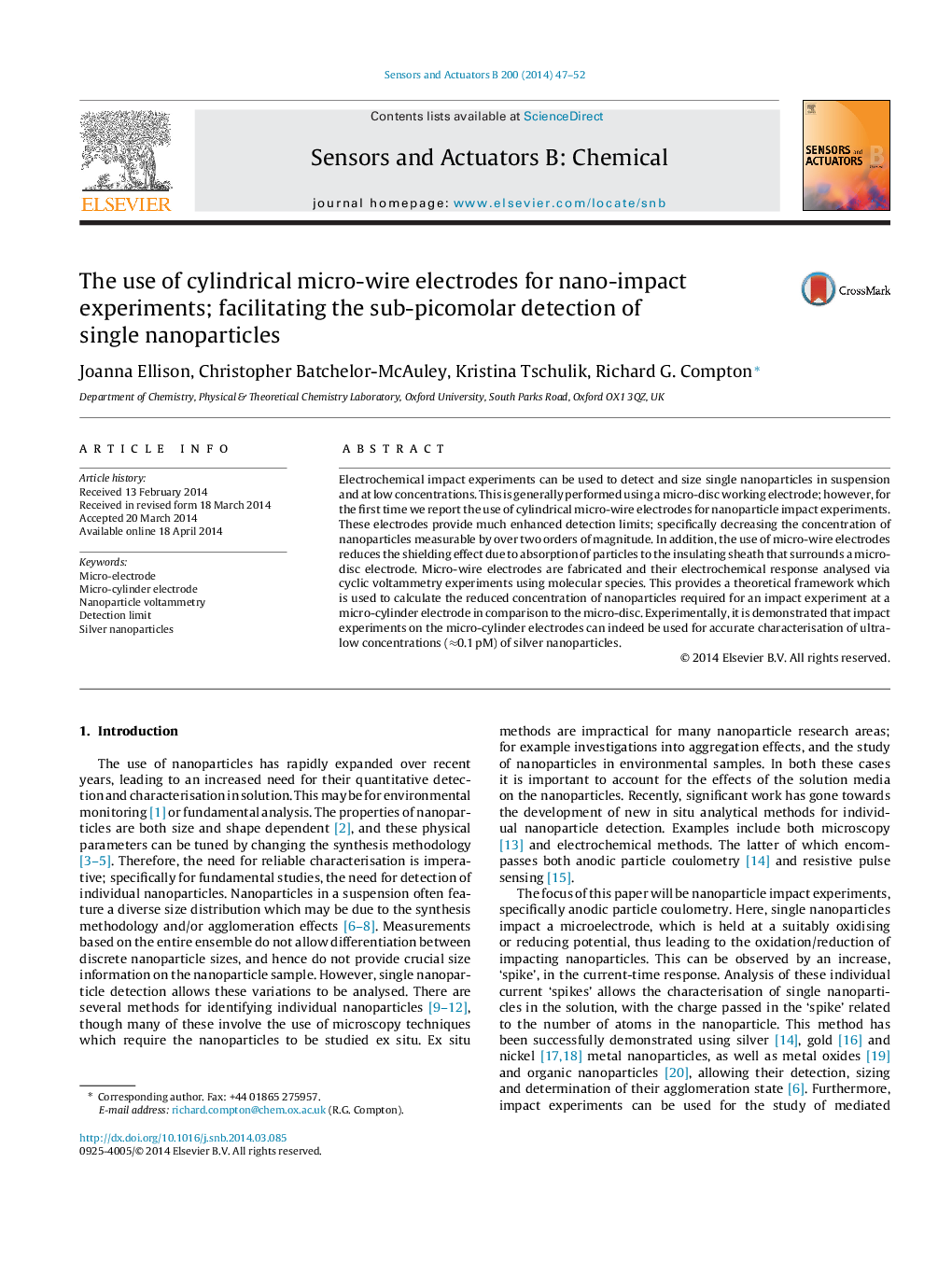| Article ID | Journal | Published Year | Pages | File Type |
|---|---|---|---|---|
| 739966 | Sensors and Actuators B: Chemical | 2014 | 6 Pages |
•Micro-cylindrical electrodes are fabricated and characterised electrochemically.•Nanoparticle-impact experiments are performed to detect single nanoparticles.•Sub-picomolar levels of nanoparticles are detected and accurately sized.•Lower detection limit is attained with a micro-cylinder than a micro-disc.
Electrochemical impact experiments can be used to detect and size single nanoparticles in suspension and at low concentrations. This is generally performed using a micro-disc working electrode; however, for the first time we report the use of cylindrical micro-wire electrodes for nanoparticle impact experiments. These electrodes provide much enhanced detection limits; specifically decreasing the concentration of nanoparticles measurable by over two orders of magnitude. In addition, the use of micro-wire electrodes reduces the shielding effect due to absorption of particles to the insulating sheath that surrounds a micro-disc electrode. Micro-wire electrodes are fabricated and their electrochemical response analysed via cyclic voltammetry experiments using molecular species. This provides a theoretical framework which is used to calculate the reduced concentration of nanoparticles required for an impact experiment at a micro-cylinder electrode in comparison to the micro-disc. Experimentally, it is demonstrated that impact experiments on the micro-cylinder electrodes can indeed be used for accurate characterisation of ultra-low concentrations (≈0.1 pM) of silver nanoparticles.
